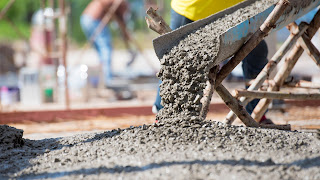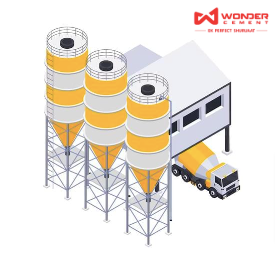Types of soil and their effects on different building foundations.
Soil is essential for building foundations. The type of soil on which a structure is built determines the foundation's stability and durability. Soil conditions vary widely across different locations. It is important to understand the type of soil present at a building site to determine the best construction techniques and materials.
In this blog, we will discuss the different types of soil and their effects on building foundations. This is particularly relevant in the context of earthquake-resistant building construction.
Types of soil:
There are several types of soil, each with its own unique properties that impact building foundations. Some of the most common soil types include:
Clay Soil:
Clay soil is dense and has poor drainage. It is prone to swelling and shrinking with changes in moisture levels, which can cause cracks in building foundations. In areas with high seismic activity, clay soil can also cause liquefaction during earthquakes, which can lead to building collapse.
Sandy soil:
Sandy soil is porous and drains well, preventing moisture-related issues. However, it is not as strong as other types of soil and is prone to erosion.
Silly soil:
Silty soil is a mix of sand, clay, and silt particles. It is often found near rivers and other water bodies and is prone to erosion. It is also less stable than clay soil and may shift during earthquakes.
Rocky soil:
Rocky soil is dense and provides excellent foundation support. However, it can be difficult to excavate, making it more expensive to build on.
Effects of soil types on building foundations:
The type of soil on which a building foundation is constructed can have a significant impact on its stability and resistance to earthquakes. For example,
Clay Soil - As mentioned earlier, clay soil can shrink and expand with moisture changes. This can cause cracks in building foundations and compromise their stability. In areas with high seismic activity, clay soil can also liquefy during earthquakes, leading to building collapse.
Sandy Soil - Sandy soil is less stable than other soil types and can shift during earthquakes. This can lead to foundation settlement and damage to the structure above.
Silty Soil - Silty soil is prone to erosion and shifts during earthquakes. This can cause foundation settlement and structural damage.
Rocky Soil - Rocky soil provides excellent support for building foundations and is highly resistant to earthquake damage.
Earthquake-resistant building construction:
Given the potential for earthquakes to damage building foundations, it is important to use construction techniques that minimize this risk. Some strategies for earthquake-resistant building construction include:
Foundation Design - The design of the foundation should take into account the type of soil on which it will be built. For example, if the soil is prone to liquefaction, the foundation may need to be deeper or reinforced with additional materials.
Reinforcement - Steel reinforcement can be added to building foundations and walls to increase their resistance to earthquake forces.
Damping Systems - Damping systems can be installed to reduce energy transfer to the building during an earthquake. These systems can include shock absorbers, vibration isolators, and other devices.
Conclusion:
The type of soil on which a building foundation is constructed can have a significant impact on its stability and resistance to earthquakes. Clay soil, sandy soil, silty soil, and rocky soil each have their own unique properties that affect building foundations in different ways. By understanding these properties and using appropriate construction techniques, it is possible to build earthquake-resistant structures that withstand seismic activity and provide long-term durability.
If you're looking for high-quality cement and concrete products that are backed by industry-leading expertise and support, look no further than Wonder Cement Ltd. Visit our website today to learn more about our full range of products and services, including our commitment to quality, sustainability, and customer satisfaction.



Comments
Post a Comment